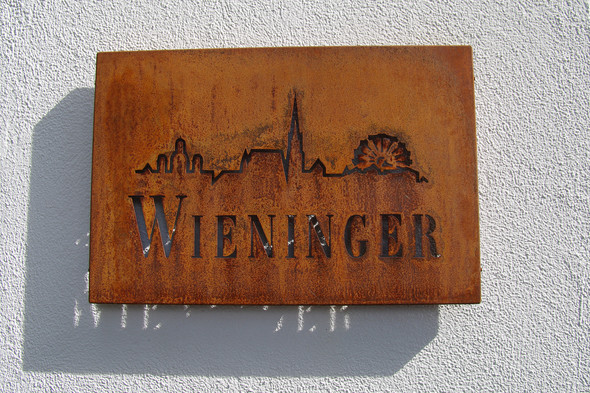Think of an Austrian wine region and what would spring to mind? Perhaps Wachau, maybe even Kremstal or Kamptal or the Burgenland. Vienna, the capital, probably doesn’t feature too high on the list. The millions of tourists who visit Vienna every year are blissfully unaware of the vineyards just a few kilometres from the Hofburg and Stephansplatz. And even then they would probably rather quaff their wines in one of the city’s many Weinstube rather than trek out to the vineyards. However, Vienna, the wine capital, still has its fair share of vineyards, both in the heart of residential areas and spreading out over the slopes of surrounding hills and up into the Wienerwald (Vienna Woods). Vienna actually boasts 700ha hectares of vines of which the biodynamic winemaker Fritz Wieninger has approximately 70, including 17 recently acquired with Weingut Hajszan-Neumann, making him Vienna’s largest producer.
The vineyards overlook the city on Nussberg and Bisamberg, two hills with different soils and microclimates, separated by the Danube. Fritz has his winery, built in 2006, on Bisamberg, where he presses all his grapes. The Hajszan-Neumann grapes, however, continue to be pressed over on the Nussberg, as it would be too logistically challenging otherwise, as it would take 20-30 minutes each way by tractor. He makes 40 different types of wines together with the new acquisition, but plans to keep the two brands separate, as it may be beneficial in some export markets.
The reds and the Chardonnay see new French oak, whereas the other whites are kept in stainless steel. He tried out Hungarian oak too, Austria being a neighbour of Hungary, but found that it didn’t really suit their wines. He is doing a roaring, but unprofitable, trade in selling the used barrels. There is a waiting list for barrels, everybody wants to have barrels. A new barrel costs €800, but only sells for €70, a better deal for the next customer.
A pioneer of quality in Vienna, he has been instrumental in pushing Wiener Gemischtersatz DAC into the limelight in recent years, beginning with the success of the Nußberg Alte Reben 1999. This is a wine where the grape varieties are all grown together in the vineyard, up to 15 traditionally, then harvested and processed together. Gemischtersatz is particularly close to Fritz’s heart as Head of the Wiener Gemischter Satz association, ‘a Viennese classic that had nearly been forgotten’.
Fritz does receive some visits, but mostly from journalists and organised groups. He doesn’t want busloads of tourists though as he thinks this is not appropriate and there is always plenty of work to do with 70ha to manage.






